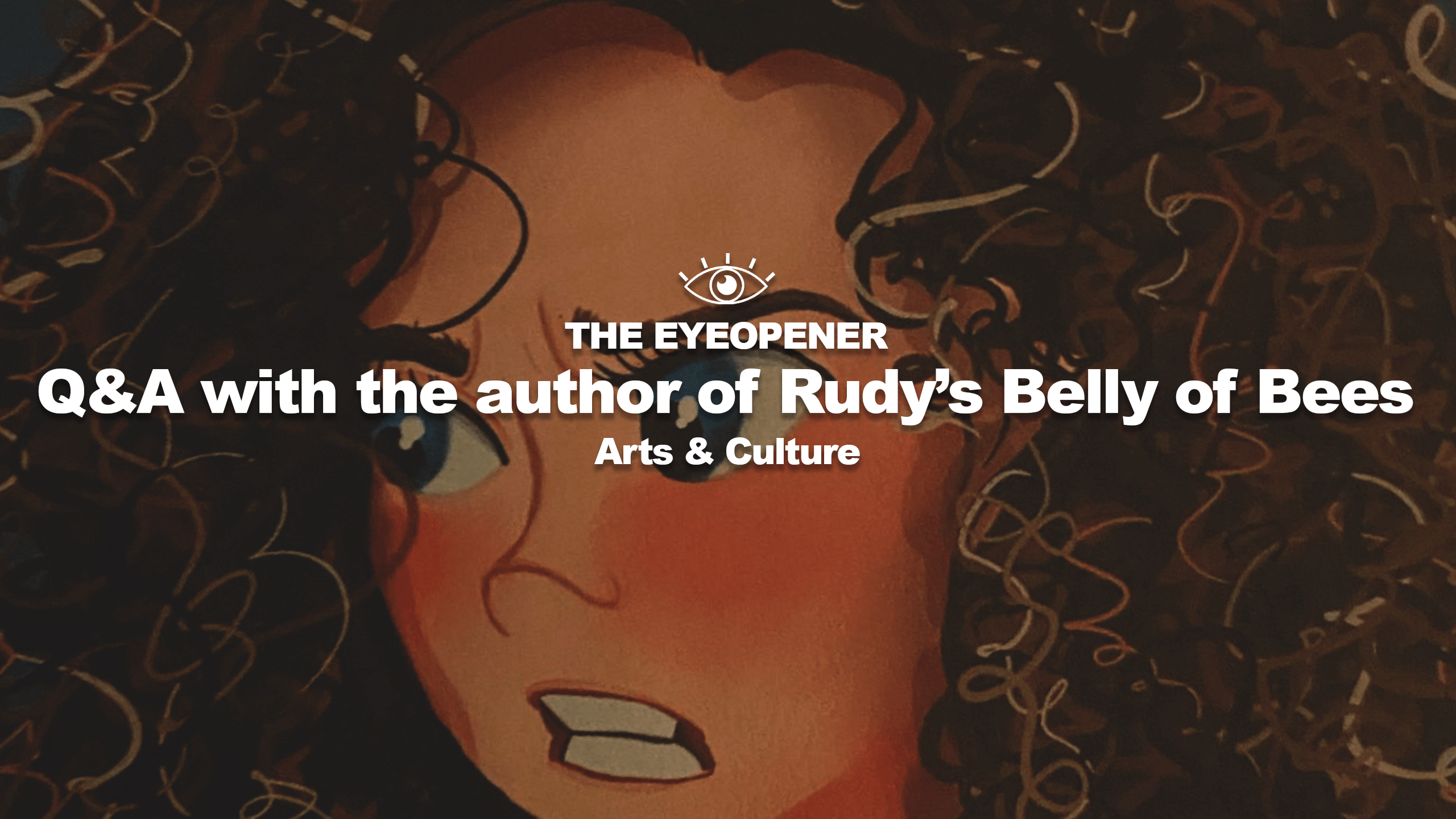In her debut children’s book, titled Rudy’s Belly of Bees, Ryerson journalism graduate Shannon Schaefer discusses coping with and understanding feelings of anxiety.
Interviewer: Samreen Maqsood
Editor: Myra Rahim
Ryerson journalism class of 2021 alumna, Shannon Schaefer, is the author of Rudy’s Belly of Bees, a children’s book published the same year she graduated on coping with and understanding feelings of anxiety. Schaefer wrote her debut book based on her own childhood experiences with anxiety and now hopes the book will serve as a tool for children across Canada to understand their anxious feelings. The Eyeopener caught up with Schaefer to hear more about the book and its inspirations.
How did Ryerson’s journalism program shape you as the writer you are today?
I was always interested in writing and I did a lot of creative writing in high school. When it came time for university, I didn’t necessarily want to go through an English program. I didn’t feel like I fit in there. Journalism really felt like this nice in between option of ‘I get to be creative’ and I get to have that seriousness.
The really big takeaway from that program was the ability to learn how to write very succinctly and tight and to be able to get a point across. No matter what field, you end up in writing, that’s just a really good skill to have. Especially with a children’s book, on a topic as serious as mental health, you need to be sure that you are not spouting things that are incorrect.
The book focuses on navigating mental health as a child. What was your inspiration?
Growing up, I was always titled as being shy and quiet, maybe even a little bit awkward. As children, especially, we take those titles and morph them into our identities. As you grow up, those titles can sometimes morph into serious things, and for myself, that was being a child, turned teenager, then adult with anxiety. As we get older, it’s important to sometimes reflect that these things don’t always just appear, they develop. For Rudy’s, the inspiration hit during the pandemic. Everyone else felt panicked and felt like the world was ending, but I was struggling to cope.
The more I reflected on the situation, myself and what was happening, I realized again how [for] much of my childhood and teenage years, I didn’t develop tools and ability to recognize the signs of mental health and poor mental health. I look back now and it’s one of the things I struggled with as a child, but these were often a byproduct of this anxiety that was lingering and not really being dealt with. Perhaps if I would have had these resources, maybe I would have been a little bit more reflective.
Why did you decide that now was the time to publish a book?
One was because of the timeliness of it, especially with the pandemic, realizing just how many children are unfortunately going to come out on the other side of this with similar issues. There’s a real relevance now more than ever to have these tools around because children are also experiencing what we are.
I also had the support of the university, as a lot of the book was funded by Ryerson teams and different organizations. Being a university student, self-publishing does not come without a price. With Ryerson, I found that there was so [much support] that while I was still a university student, and probably would carry that title as an alumni, I could lean on those.
What are some of the challenges you faced writing this?
I would say it really was emotional. Rudy’s was based after me, my illustrator used baby photos of me to model Rudy. It really was paying tribute to my inner child. What I’ve learned through Rudy’s is that to truly be happy and to address some of the issues we carry with us in adulthood, you have to make peace with your inner child, but that doesn’t come without a price.
Even though the story is lighthearted and nothing big and dramatic happens, I had to go through some of my own memories, to get to Rudy and get a resolution for her. In a weird way, I was so happy getting a resolution for Rudy, but then I wished I had that for myself. In the mental sense, it was a challenge to go into these places of my own head.
What is the overall message you hoped to give out?
That these feelings are normal, they exist and there’s a word for it. It’s not just titles, words or explanations for what’s going on, but above all, that there’s ways to deal with it. The thing I love about Rudy’s is it doesn’t end where she’s happy and perfect. Towards the end, the feelings of anxiety come back. But there are coping mechanisms that come back into play, as we learned.
Anxiety and mental health are big scary topics, but I really hope the takeaway for children will be that it is manageable, it is digestible, you’re not strange for feeling it, and above all, peers will help you, you can help yourself and there are ways to navigate this.
Rudy’s Belly of Bees can be purchased on FriesenPress, Indigo Chapters, Apple, Google Books and more.











Leave a Reply